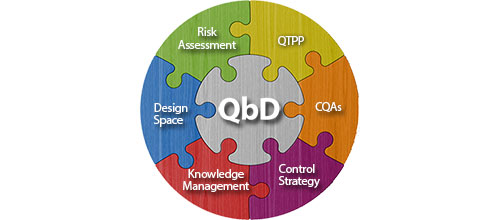Is the review of the Audit Trail required in Clinical trials?
Recommendation

ICH Q8 Training Course - Live Online Training
A new post, "MHRA GXP Data Integrity Guidance: Part 1 - A GCP Perspective" has recently been published in the MHRA Inspectorate blog. The MHRA published the GXP Data Integrity Guidance in March 2018. According to the Agency, "this was welcomed by industry and has been discussed at many stakeholder events since". The MHRA will be issuing a series of GXP blog posts to assist further in the reflections received since the issuance of the guidance. In the first part, the blog gives clarification on the interpretation and implementation of the GXP Data Integrity (DI) guidance in the clinical trial setting; in particular it deals with the following:
Is an Audit Trail Review required? Yes, it is - but risk-based!
The MHRA guidance describes the need for a documented audit trail review, where the need for and extent of such evaluation is identified in the trial risk assessment, performed prior to the trial commencing. According to the agency, this could include evaluation of data points associated with critical/complex trial processes. Does this mean that sponsors, or Clinical Research Organizations (CROs) working on behalf of sponsors, need to develop a generic audit trail review Standard Operating Procedure (SOP) as part of their quality system (QS)? The agency points organizations back to the statement that "the need for a review of an audit trail should be determined by a risk assessment based on the requirements of the trial, taking into account the systems, procedures and controls in place to be used in the trial". Therefore, "to have a generic SOP would probably not add any benefit to this process and is not mandated by the guidance or expected by GCP inspectors", the agency states.
Conducting a trial risk assessment upfront is also supported by the ICH E6 (R2) Addendum. This risk assessment should address the most appropriate approach to demonstrating the DI required by the clinical trial protocol. Therefore, the risk assessment for DI can be "incorporated into the standard trial risk assessment and does not necessitate a separate document/duplicate of information already contained within the overall trial risk assessment", MHRA says.
Recording of Patient Data - What are the practical implications of the DI guidance in the clinical setting?
In relation to recording of patient data, and the need for a second person to verify, for example, vital signs from the recording instrument, Section 5.2 of the DI guidance states: The "recording by the second person should be contemporaneous with the task being performed, and the records should identify both the person performing the task and the person completing the record". It is common practice in GCP for one person, as part of standard medical care, to take readings from instruments not equipped with a computerized data system or recording device. "In such standard clinical situations occurring in clinical trials, this can absolutely be the same person performing the task and completing the clinical trial record. A second person would only be needed if, from a clinical perspective, it is not practical for one person to both perform the clinical tasks and record the data. There is absolutely no expectation from the DI guidance to have 2 people responsible for this".
What Amount and Resolution of Data has to be Collected?
What is meant by the requirement to collect data that "allows the full reconstruction of activities, the amount and the resolution (degree of detail) of data to be collected", as per section 6.7 of the DI guidance? According to MHRA, concern has been raised that this may mean organizations (e.g. sponsor/CRO/contracted organization) should be developing a stand-alone SOP for this topic. However, MHRA states that determining the amount and resolution of the data to be collected is an integral part of clinical trial quality/data management as defined by ICH E6(R2). The precision, accuracy and timing of clinical measurements are determined by the authorized clinical trial protocol and are commonly addressed and documented as part of an organization's overall QS planning, rather than specifically in relation to any 'separate' DI considerations. Therefore, according to the agency, it is up to organizations to determine the best way to approach this as per their QS, and "there is no statutory requirement to have a stand-alone SOP".
The full MHRA Blog is available on the MHRA Inspectorate website.




